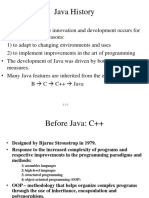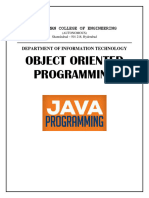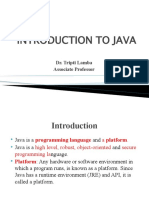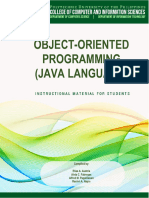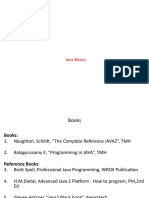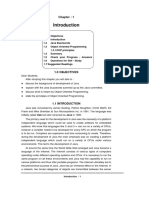0% found this document useful (0 votes)
28 views40 pagesJava Programming Essentials
The document discusses the history and key concepts of Java, including its origins in the early 1990s at Sun Microsystems for programming consumer electronics, its re-targeting for internet programming, and its core data types and design principles like simplicity, security, portability and object-orientation. It also examines Java's buzzwords that were used to summarize its main considerations like being interpreted, architecture-neutral and robust.
Uploaded by
K VENKATA SRAVANICopyright
© © All Rights Reserved
We take content rights seriously. If you suspect this is your content, claim it here.
Available Formats
Download as PPTX, PDF, TXT or read online on Scribd
0% found this document useful (0 votes)
28 views40 pagesJava Programming Essentials
The document discusses the history and key concepts of Java, including its origins in the early 1990s at Sun Microsystems for programming consumer electronics, its re-targeting for internet programming, and its core data types and design principles like simplicity, security, portability and object-orientation. It also examines Java's buzzwords that were used to summarize its main considerations like being interpreted, architecture-neutral and robust.
Uploaded by
K VENKATA SRAVANICopyright
© © All Rights Reserved
We take content rights seriously. If you suspect this is your content, claim it here.
Available Formats
Download as PPTX, PDF, TXT or read online on Scribd
/ 40




